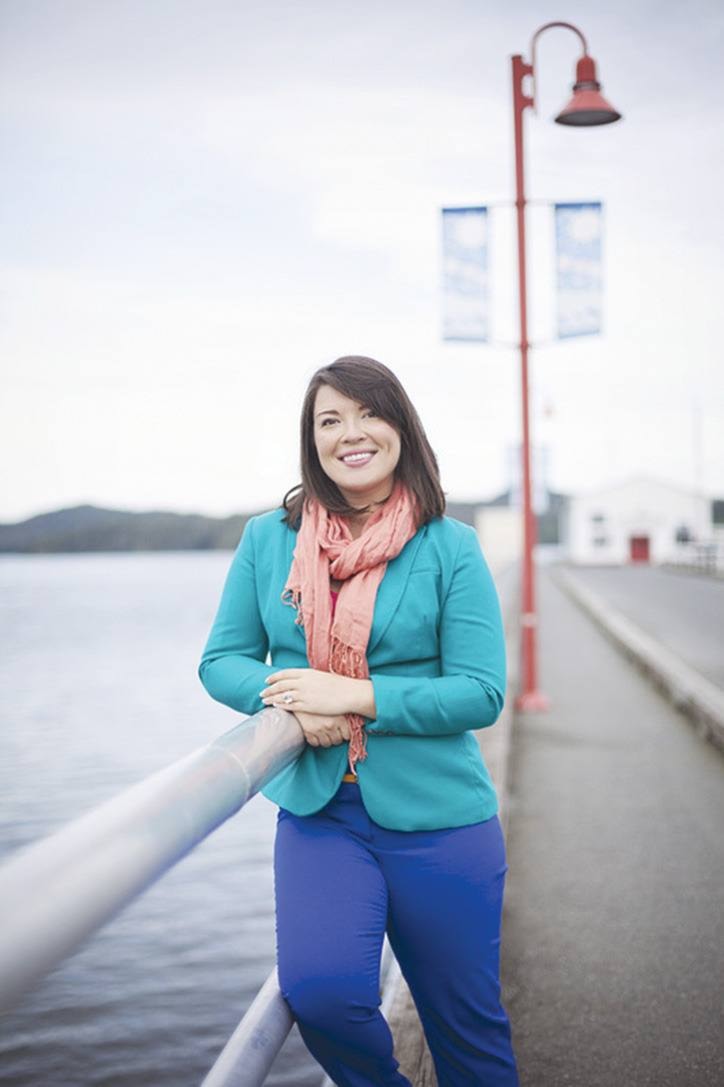Jessie Hemphill wears many hats.
She is a councillor for Port Hardy, runs her own consulting business, helps First Nations communities with community planning and facilitation, and is involved in a range of other roles from sitting on the board of the Canadian Women’s Foundation’s Girl’s Fund to co-founding the Young Elected Officials Network.
Hemphill grew up in Port Hardy and attended the Gwa’sala-’Nakwaxda’xw School. As a teenager, her family lived on the reserve and she attended Port Hardy Secondary School.
She obtained a degree in linguistics and indigenous studies at the University of Victoria and afterwards returned home to begin a job as the Comprehensive Community Planning Coordinator for Gwa’sala-’Nakwaxda’xw, a huge learning experience.
Two years ago Hemphill began her own consulting business, a part of which sees her travelling to First Nations communities in B.C. and beyond to help create and implement community plans and train community members to carry them out. She also works in project management and facilitation.
Hemphill became the first First Nations person ever elected to Port Hardy Council and the youngest women ever in 2011, and she is passionate about encouraging more young people to pursue these kinds of positions.
Hemphill sat down for an interview in Carrot Park to speak about her work in different communities, identity, and the importance of collaborative brainstorming and sharing.
On moving between different worlds
“Us kids grew up having really strong roots in our First Nations community, but also really strong attachment to Irish culture and knowing that that was part of our heritage. I was 18 I think when I found out I was Métis. Our family didn’t find out until a decade or so ago, so I wasn’t raised in that culture. But even the Métis were mixed right, half Cree, half French. So I think having that mixed heritage and just recognizing that there’s something beautiful in all of these different cultures, and something to celebrate in all of them, nothing is superior or inferior, it’s just different.”
“When you are talking about mixed race people, sometimes people say, ‘do you identify more with your First Nations half or your white half?’ And I like to think of it more as being intersectional, so there is something unique about being mixed that is unto itself, its like the space between. So it’s not one foot in one and one foot in the other, its like something completely unique that is the intersection of all those things.”
On bridging communities
“I chair the First Nations Relations Committee which is a new committee this term, and so that is really exciting because what we are trying to do is find ways for the District to work towards reconciliation either by doing things on our own end-like Hank [Bood] started acknowledging that we are on Kwakiutl territory at the beginning of the council meetings which is great. We had a one day session between our council and folks from Gwa’sala-’Nakwaxda’xw and we watched the film about the relocations and just had some good dialogue and relationship building happening.”
On the importance of brainstorming and idea-sharing
“I also think that there is a lot of under-utilized wisdom and the ability to deal with a lot of our issues if we would work together and not wait on our government all the time for funding. Funding is really important, but communities all over the place are doing things to deal with their problems, and some of them are really successful. I think if we did more of that collaborative information sharing and brainstorming and that kind of thing, we could probably deal with a lot of stuff.”
On her community planning model
“I’ve had my own company for two years. Mostly what I do is I go to First Nations communities that want to do a community plan, and I go and I help them hire and train sometimes, or at least train, a community planning coordinator from the community. So traditionally I think when a lot of non-First Nations community planning consultants have worked with First Nations, they have come in, done the work, left a plan and then left the community. So my model is to invest the person from the community with as many skills and tools and ideas and tricks as possible around community planning so that when I leave, they’re still there in the community with all that knowledge. The work is a lot better too, because then instead of me guessing about the inner workings of the community, or spending a lot of time building relationships just to get the work done, I can focus on building a relationship with that person and then they have all of their connections in the community that feeds into the plan and their knowledge of being a community member that feeds into the plan. So it works a lot better and very often the community planning coordinator goes onto a full-time job in the administration or goes onto be council or chief, or they start their own company. It’s a really great stepping stone.”
This is part of a new series examining influential people in the communities of the North Island.
